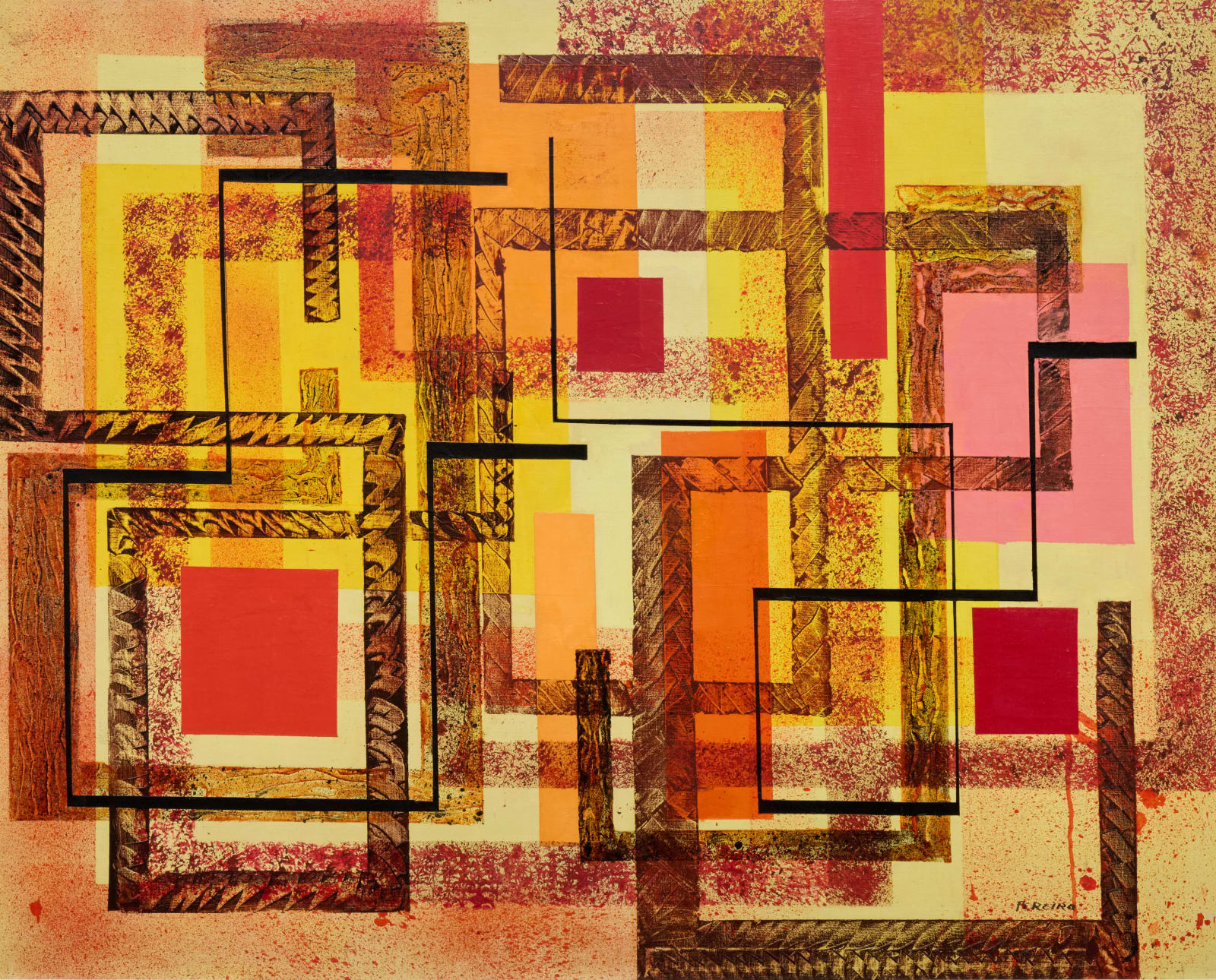Irene Rice Pereira
101.6 x 127 cm
Born in Boston in 1902, Irene Rice Pereira was not destined for an easy path into the art world, yet she would emerge as one of America's most innovative abstract artists and a leading proponent of Bauhaus principles in the United States. After her father's death, the young artist found herself working in design to support her family while pursuing night classes at the Art Students League, studying alongside fellow artists Burgoyne Diller and David Smith under teachers Jan Matulka and Richard Lahey. A formative moment came in 1931, when Pereira traveled to Europe and North Africa. In Paris, she studied with Amédée Ozenfant and was profoundly influenced by the dramatic light and infinite space of the Sahara Desert. These transformative experiences would echo through her work for decades to come, shaping her lifelong commitment to experimental abstraction.
A founding member of the American Abstract Artists and co-founder of the Design Laboratory in 1935, a subset of the WPA's Federal Art Project, Pereira championed art's social function and the integration of technology with transcendental vision. She pioneered the use of unconventional materials including glass, plastic, gold leaf, and even radium paint, creating luminous works that explored light and shallow planar depth. Pereira's innovative techniques included painting on layered glass surfaces and incorporating reflective materials that brought unprecedented luminosity to abstract painting. Her work bridges machine-age modernism with metaphysical concerns, establishing her as a singular voice in mid-century American abstraction.
Incandescent represents the artist's return to oil painting in the 1950s, through which she incorporated varied textures and opacities and increased the scale of her supports. Overlapping layers of warm-colored forms and black rectilinear lines create a composition that generates illusions of deep pictorial space, reflecting Pereira's enduring fascination with theories of perception. She incorporates elements of opacity and transparency in her paint application—lessons gleaned from her innovative work with glass—now applied to the more traditional medium of oil paint.
Incandescent relates to a poem written by the artist the same year the oil was painted, titled "Night-Dawning Daybreak":
I embrace you
I embrace you.
Night-dawning light
I embrace you.
Black-white light
mounting light
mounting light
light mounting mount.
Mountain
mountain
mountain
regal mountain.
Mountain
mounting
mounting
mounting Upward!
Upward-flowing mountain!
Evening splendor
morning brilliance
I embrace you.
Evening splendor, glory of nightly suns,
black night mounting upward — white light of evening stars.
Sing the heated stillness
of your silence.
Bathe the earth with dew.
Diamond dewdrop awakening — crystal light of rainbow stars.
Night's incandescent tenderness
has wrought the starlit dawn.
February 26, 1952 [1]
In January 1953, Incandescent was included in a joint retrospective of Loren MacIver and Irene Rice Pereira as two of America's leading women artists at the Whitney Museum of American Art, which traveled across the United States. The exhibition was organized by John I. H, notable Americanist and Director of the Whitney Museum.
Pereira’s works are held in over two dozen major museum collections, including the Museum of Modern Art, New York; the Whitney Museum of American Art, New York; and the National Gallery of Art, Washington, D.C.—a testament to her singular vision in mid-century American abstraction.
[1] Irene Rice Pereira, “Night Dawning Daybreak,” Crystal of the Rose, New York: The Nordness Gallery, 1959, pp. 48-49
Provenance
The artist;[Durlacher Bros., New York, by 1953];
[Andre Zarre Gallery, New York];
Private collection, Connecticut; to
Private collection, 2020 until the present
Exhibitions
Whitney Museum of American Art, New York; the Dallas Museum of Fine Arts, Texas; the Des Moines Art Center, Iowa; and the San Francisco Museum of Art, California, Loren MacIver and I. Rice Pereira, 1953, no. 50, as IncandescentUniversity Galleries, University of Nebraska Lincoln, Nebraska Art Association Sixty-Fourth Annual Exhibition, February 28—March 28, 1954, illus., as Incandescent
Literature
John I. H. Baur, Loren MacIver and I. Rice Pereira, New York: The MacMillan Company in association with the Whitney Museum of American Art, 1953, p. 65Karen A. Bearor, Irene Rice Pereira: Her Paintings and Philosophy, University of Texas Press, 1993, p. 194, illus. on the frontispiece, as Radiant Scene of Spring

